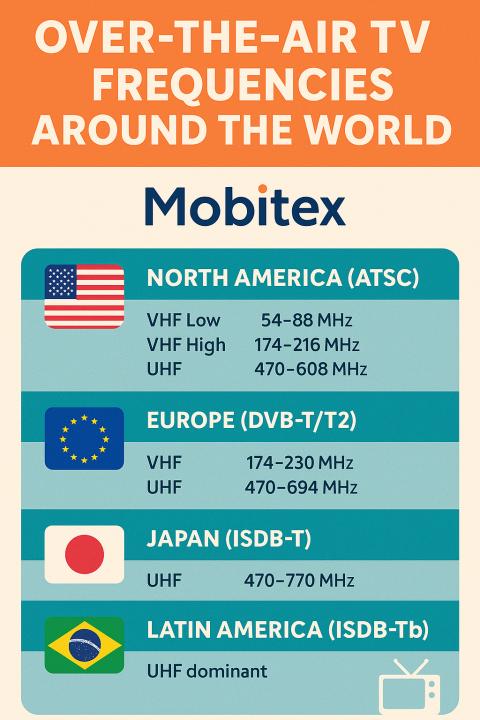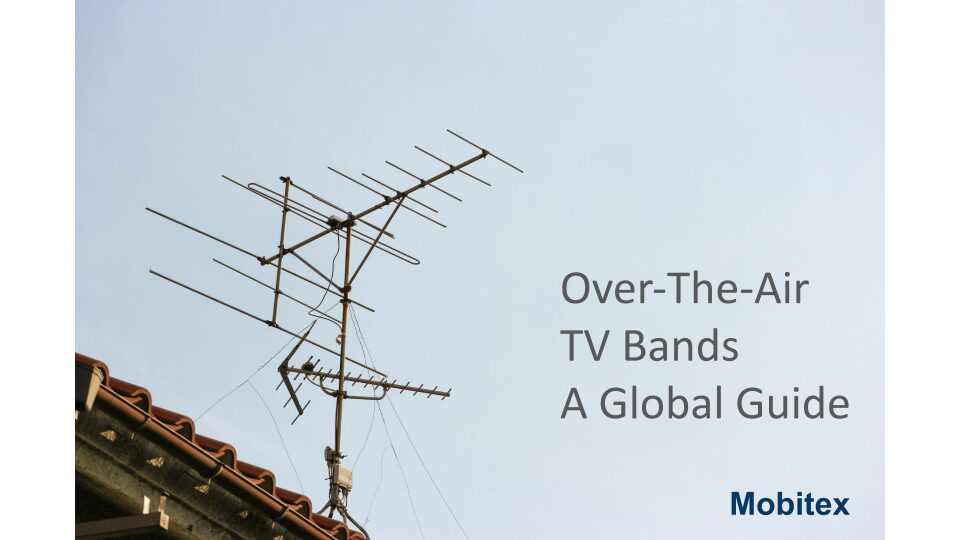📡 Over-the-air (OTA) television allows viewers to receive free TV broadcasts using an antenna — no cable or satellite subscription needed. But the channels and frequency bands used for these broadcasts vary significantly from one part of the world to another. This article explores the OTA TV frequency bands used globally, how they differ, and what it means for viewers and manufacturers alike.
🌍 What Is Over-the-Air (OTA) TV?
OTA TV refers to free broadcast television signals transmitted from local stations via radio waves. You can receive these signals using an antenna and a TV with a digital tuner (or a digital converter box).
Unlike streaming or cable, OTA provides access to major networks like ABC, CBS, NBC, BBC, CBC, NHK, and others – depending on your region.
📶 Frequency Bands Used for OTA TV
Over-the-air TV channels are transmitted using two main frequency bands:
- VHF (Very High Frequency): 30 MHz to 300 MHz
- UHF (Ultra High Frequency): 300 MHz to 3 GHz
However, not all of these ranges are used for TV, the specific portions vary by country and are managed by national regulators under international ITU guidance.

🗺️ Regional Breakdown of OTA TV Bands
🇺🇸 North America (ATSC – Advanced Television Systems Committee)
- VHF Low Band: Channels 2–6 (54–88 MHz)
- VHF High Band: Channels 7–13 (174–216 MHz)
- UHF Band: Channels 14–36 (470–608 MHz)
The ATSC standard is used in the U.S., Canada, Mexico, and South Korea. ATSC 3.0 (NextGen TV) is gradually rolling out across the U.S.
🔧 Note: Many broadcasters have moved away from VHF due to signal quality issues, favoring UHF channels.
🇪🇺 Europe (DVB-T and DVB-T2 – Digital Video Broadcasting)
- VHF Band III: 174–230 MHz
- UHF Band IV/V: 470–694 MHz
Europe uses the DVB-T and DVB-T2 standards. The upper UHF band (700 MHz and above) has been reallocated for mobile broadband across most European countries.
📉 Analog TV has been phased out across Europe. All transmissions are now digital.
🇯🇵 Japan (ISDB-T – Integrated Services Digital Broadcasting)
- VHF (Channels 1–3): 90–108 MHz (largely unused for TV)
- UHF: Channels 13–62 (470–770 MHz)
Japan’s ISDB-T standard includes emergency alert features and is also used in countries like Brazil and the Philippines.
🇧🇷 Latin America
Many Latin American countries (Brazil, Argentina, Peru, Chile) have adopted ISDB-Tb, a modified version of Japan’s ISDB-T.
- UHF Dominance: Most OTA TV is delivered over UHF bands (470–698 MHz).
- VHF is used in some regions, but many broadcasters are migrating to UHF due to its superior urban penetration.
🇨🇳 China (DTMB – Digital Terrestrial Multimedia Broadcast)
China uses its own DTMB standard, transmitting mostly in UHF.
- UHF Band: 470–862 MHz
- Some VHF use exists but is limited
DTMB is also used in Hong Kong, Pakistan, and parts of Africa.
🌍 Africa
There is no universal standard — different countries use DVB-T, DVB-T2, ISDB-T, or DTMB, often depending on geopolitical partnerships.
- UHF (470–694 MHz) is the most common TV band.
- Migration from analog to digital is ongoing in many regions.
🛑 Spectrum Reallocation Trends
Globally, there’s a major trend of repurposing high UHF frequencies (700 MHz and above) for mobile broadband (4G/5G). This means:
- TV broadcasters are being “repacked” into lower frequencies
- Some OTA channels may be lost or moved, requiring viewers to rescan channels
This has already happened in:
- U.S.: 600 MHz band auctioned for mobile
- Europe: 700 MHz cleared for 5G
- Asia: Progressive reallocation
📺 Channel Numbers vs Frequency: The Mapping
TV “channel numbers” don’t match their exact frequency in MHz. For example:
| Channel | Band | Frequency Range (MHz) |
|---|---|---|
| 2 | VHF | 54–60 |
| 7 | VHF | 174–180 |
| 14 | UHF | 470–476 |
| 36 | UHF | 602–608 |
Channel plans differ slightly between ATSC, DVB-T, and ISDB standards.
🧭 Regulatory Authorities
Here’s a look at some of the national spectrum authorities:
- 🇺🇸 FCC (Federal Communications Commission)
- 🇨🇦 ISED (Innovation, Science and Economic Development)
- 🇪🇺 CEPT and national regulators
- 🇯🇵 MIC (Ministry of Internal Affairs and Communications)
- 🇨🇳 MIIT (Ministry of Industry and Information Technology)
- 🌍 ITU (International Telecommunication Union) – Oversees global allocations
🔌 Antennas and Compatibility
If you’re buying or recommending antennas globally, keep in mind:
- North America: Antennas must support both VHF and UHF for maximum compatibility
- Europe & Asia: UHF-only antennas may be sufficient
- Signal strength, terrain, and building materials impact reception more than the band itself
🗞️ Summary: Global OTA TV at a Glance
| Region | Standard | Common Bands | Notes |
|---|---|---|---|
| North America | ATSC | VHF + UHF (up to 608 MHz) | Transition to ATSC 3.0 in progress |
| Europe | DVB-T/T2 | VHF + UHF (up to 694 MHz) | UHF above 700 MHz reallocated |
| Japan | ISDB-T | UHF (470–770 MHz) | VHF mostly unused |
| Latin America | ISDB-Tb | Mostly UHF | Modified Japanese system |
| China | DTMB | UHF | Used in select global regions |
| Africa | Mixed | Mostly UHF | Transition to digital ongoing |
🧾 Final Thoughts
Over-the-air TV remains a vital source of information, education, and entertainment around the world. With evolving spectrum allocations, digitization, and standards, staying informed about your region’s OTA frequencies and equipment compatibility is more important than ever.
Whether you’re a viewer setting up an antenna, an engineer designing equipment, or a policymaker managing spectrum — understanding OTA TV bands globally is key to staying connected.

